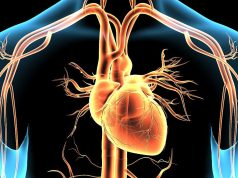The American College of Sports Medicine 63rd Annual Meeting and 7th World Congress on Exercise is Medicine
The annual meeting of the American College of Sports Medicine was held from May 31 to June 4 in Boston and attracted more than 6,000 participants from around the world, including clinicians, academicians, allied health professionals, and others interested in sports medicine. The conference highlighted recent advances in exercise science and sports medicine, with presentations focusing on the advancement and integration of scientific research to improve clinical practice.
In one presentation, Michael F. Bergeron, Ph.D., of Youth Sports of the Americas in Birmingham, Ala., discussed the importance of sun safety in outdoor youth sports.
“Melanoma is one of the few cancers whose rates are rising, notably among young people. In addition, sunburn is especially relevant in youth, as it increases the risk of melanoma by 50 to 90 percent if burned in childhood or adolescence,” Bergeron said. “Risk is relevant for all race/ethnicity groups, not just Caucasian children. High risk is seen in Hispanics and non-Hispanic Asians as well.”
“Physicians need to put the same emphasis on sun exposure risk and safety during pre-participation exams and interactions with young athletes as they do on other injury prevention and health-related issues.”
During another presentation, Douglas Paddon-Jones, Ph.D., of the University of Texas Medical Branch in Galveston, discussed protein intake that goes beyond the recommended daily allowance in healthy and active adults.
“Daily protein recommendations are okay as a starting point, but protein intake should be meal-based. The human body cannot store amino acids from one meal and use them later that day or the next to build/repair muscle,” Paddon-Jones said. Adding that “20 to 30 grams of protein per meal is a good starting point, but needs to be individually adjusted. It’s not fixed in stone.”
During a symposium focusing on the impact of stress on daily living, Rebecca Hasson, Ph.D., of the University of Michigan in Ann Arbor, discussed how chronic stress ranks as one of the leading bio-behavioral risk factors for cardiovascular disease, type 2 diabetes, obesity, and depression. This is due, in part, to changes in physical activity behaviors during periods of increased stress.
“Both acute stress and chronic stress are associated with decreased physical activity participation in both children and adults,” Hasson said. “Both single sessions of exercise and regular exercise can buffer the deleterious effects of acute and chronic stress. Clinicians should encourage regular physical activity participation for stress management as well as chronic disease prevention and treatment.”
Also during the symposium, James Roemmich, Ph.D., of the U.S. Department of Agriculture, presented findings that children incur stress and react to it in ways that may promote the very initial steps of cardiovascular disease.
“Adult diseases begin in childhood and the relationship between psychological stress and atherogenesis is present in children and adolescents,” Roemmich said. “Physical activity may help to reduce children’s reactivity to psychological stressors that may occur at home or at school.”
Lastly, Daheia Barr-Anderson, Ph.D., of the University of Minnesota in Minneapolis, discussed how yoga is an effective physical activity to address chronic stress in a variety of populations.
“Study after study reported a positive effect on stress levels and symptoms in both the short term (six weeks) and longer term (three months). However, the array of methodological issues (questionable methodological quality, small sample sizes, uncontrolled and/or non-randomized studies, inconsistencies in stress outcome measures) warrants the need for large, methodologically rigorous, randomized controlled trials to provide quality evidence that may serve as the impetus for clinicians to regularly recommend yoga as treatment for chronic stress,” Barr-Anderson said.
Copyright © 2016 HealthDay. All rights reserved.







